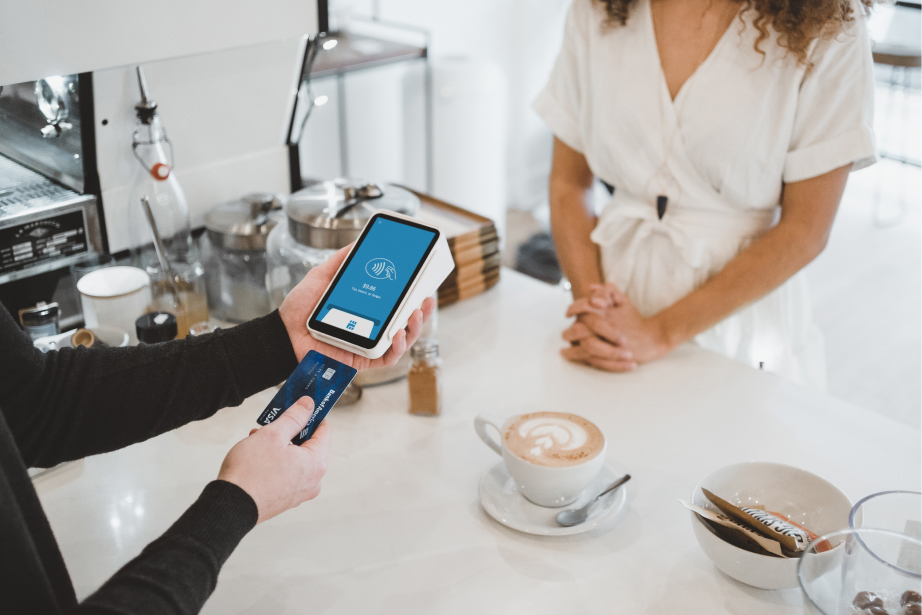
On MAY 12, 2020
The Power of Customer Self-Service for Driving Conversions Along the Purchase Journey
A consumer’s online journey with a brand, whether on their website or mobile app, is anything but a straight line, despite everything brands and businesses do to remove the roadblocks that get in the way of conversion. Unfortunately, the vast majority of online shoppers don’t typically convert along their journey.
In fact, based on a study conducted by Fevad, nearly 70% of shopping carts are left abandoned. There are a lot of factors that can contribute to this; a flaw in the overall customer experience is more than likely one of them.
If you run an e-commerce business or drive online sales in any way, it’s absolutely critical that the visitors to your site are supported at every step along their journey with your brand or business. Most importantly, they need easy and immediate access to answers to their questions, as this is key for driving reassurance around soon-to-be purchase decisions.
The first question you might be asking yourself is: how can this be done effectively? The answer is simple: customer self-service. While these solutions are typically known for the value they add to the customer experience post-sale, they, too, can help brands and businesses overcome a number of presales issues, including moving shoppers quickly through the purchase funnel.
Keep consumers on the shopping journey
Shoppers today are more demanding than ever before—a statement that 58% of customer service representatives agree with. An overly complicated purchase journey can aggravate this even more, wherein customers can feasibly stop their journey with a brand or business for any reason, at any time.
There are several factors contributing to this. First, increased competition in the e-commerce or online sales space gives consumers more choice—but also more pressure to drive action—than ever before. Additionally, because today’s consumers are constantly connected and “always on,” their attention is, therefore, limited as well.
People are bombarded by marketing messages at virtually all hours of the day. This makes it much easier for shoppers to get distracted along the shopping journey, abandoning a shopping cart on a particular site (sometimes without even realizing it).
Keeping consumers moving along the shopping journey—and, thus, maintaining their undivided attention—is the key priority here. And it’s likely the only way you’ll get them to move through the purchase funnel quickly, fully knowing that they could be easily wooed away by the competition.
To make matters worse, if visitors to your site have any doubts or concerns along the shopping journey—and you provide nothing in-context to help them get over those hurdles—you’ve basically given that sale to your competitor. For example, if a first-time visitor to your site wants to know basic information like your delivery and payment terms before making a purchase, you’ve got to make that easily accessible in the fewest clicks possible. Improving navigation and reducing the time it takes to find critical information is table stakes for creating an optimal customer experience.
So, as a rule of thumb, all content on your site must be there to help both new and existing customers alike make better, more informed purchase decisions. This is precisely where customer self-service can improve the presales experience along the shopping journey. By providing customers with the answers they need, when and where they need them, you make it easier for them to stay on that journey.
Customer self-service can reassure
A high-quality customer experience is essential for the success of any business today. Based on a customer experience study conducted by PwC, 32% of people have said they would stop doing business with a brand after only one bad customer experience. There are several things brands and businesses can do to improve this experience.
A good way to do this is by reassuring customers consistently along the purchase journey, giving them added confidence that making a purchase with your brand or business is a smart decision.
This can come in the form of qualitative customer testimonials and reviews or more quantified measures of satisfaction (i.e. a certain product on your site receiving 4.5 out of 5 stars based on customer feedback). Not only does this kind of content create a positive image for your brand, but it also lends an air of word-of-mouth credibility that can go a long way towards helping a new customer make a purchase.
Another source of reassurance comes through providing simple ways to contact customer service, finding information about return policies, and easy access to FAQ information.
In other words, the more useful content you can put directly into the hands of shoppers, before they have committed to making a purchase, the more likely you’ll get them to take action. It’s all about coming up with new ways to tip the balance in your business’s favor, giving shoppers fewer reasons to “hesitate” at the time of purchase.
Customer self-service is a great way to achieve this, simply based on the fact that it can provide shoppers with the information they need at any stage along the purchase journey—or 24/7, should they need a little more time to think or evaluate their options before making a purchase. This is even more important knowing that the majority of purchases are made during evenings and weekends, outside of “normal business hours,” which makes easy, around-the-clock access to essential information even more critical.
Since online shopping can now take place on multiple devices and platforms—desktop, mobile, tablet, and beyond—customer self-service also provides the added perk of seamlessly adapting content across all formats, displaying the right information, in the right place, and at the right time. This can make all the difference as to whether a given customer decides to make a purchase (i.e. convert) or not.
What customer self-service tools can you use?
Dynamic FAQ
Shoppers always have questions; it’s your responsibility to provide them with answers. A Dynamic FAQ page does the heavy lifting by anticipating all of the questions that your customers are most likely to ask—at different stages along the purchase journey with your brand or business—and proactively providing answers to those questions when shoppers need them most.
Chatbot
Chatbots are interactive, conversational tools that allow customers to communicate in real-time with customer service at any time of day. Like the Dynamic FAQ, they have been taught, through artificial intelligence and machine learning, to be able to answer the most common customer questions.
The biggest benefit of chatbots is their ability to automate the customer service experience, which, conversely, frees up customer service representatives to deal with more complex customer issues. When “trained” well, chatbots can be a major driver for new customer acquisition because they are able to field the most common shopper questions in real-time. This means that customers, as they continue along the shopping journey, have less time to get distracted or look elsewhere for more information.
Support Widget
A support widget is a small window that typically appears on the bottom right of a web page. They can serve up relevant content to shoppers based on the page visited—aligned to wherever customers are along the shopping journey—or based on a customer’s profile or status (if this can be identified). One of the key benefits is their ability to deliver this content in a relevant context to avoid disrupting the customer journey. This can help make the shopping experience feel much more personalized.
Like chatbots, these tools use artificial intelligence and natural language processing to surface relevant content—typically, answers to commonly asked questions at that stage in the shopping journey—to create a frictionless experience that moves shoppers towards purchase a lot more quickly. For example, a support widget on an airline ticket reservation page could offer customers information based on the destination researched or the type of passengers identified (i.e. parents with their children).
Of course, if and when more complex requests or issues arise, these intelligent customer self-service tools can know when to pass customers along to a real, living and breathing customer service representative, either by phone or via live chat, to resolve the customer inquiry.
Customer self-service is clearly more than just a post-sales customer service solution. At all stages along a customer’s purchase journey with a brand or business, customer self-service can give visitors to your site the added confidence they need to make a well-informed purchase decision. And because these tools are also highly interactive and responsive to where customers are along their journey, they not only have the power to improve the overall customer experience significantly but also a proven track-record of increasing conversion and, therefore, sales.



.png)



